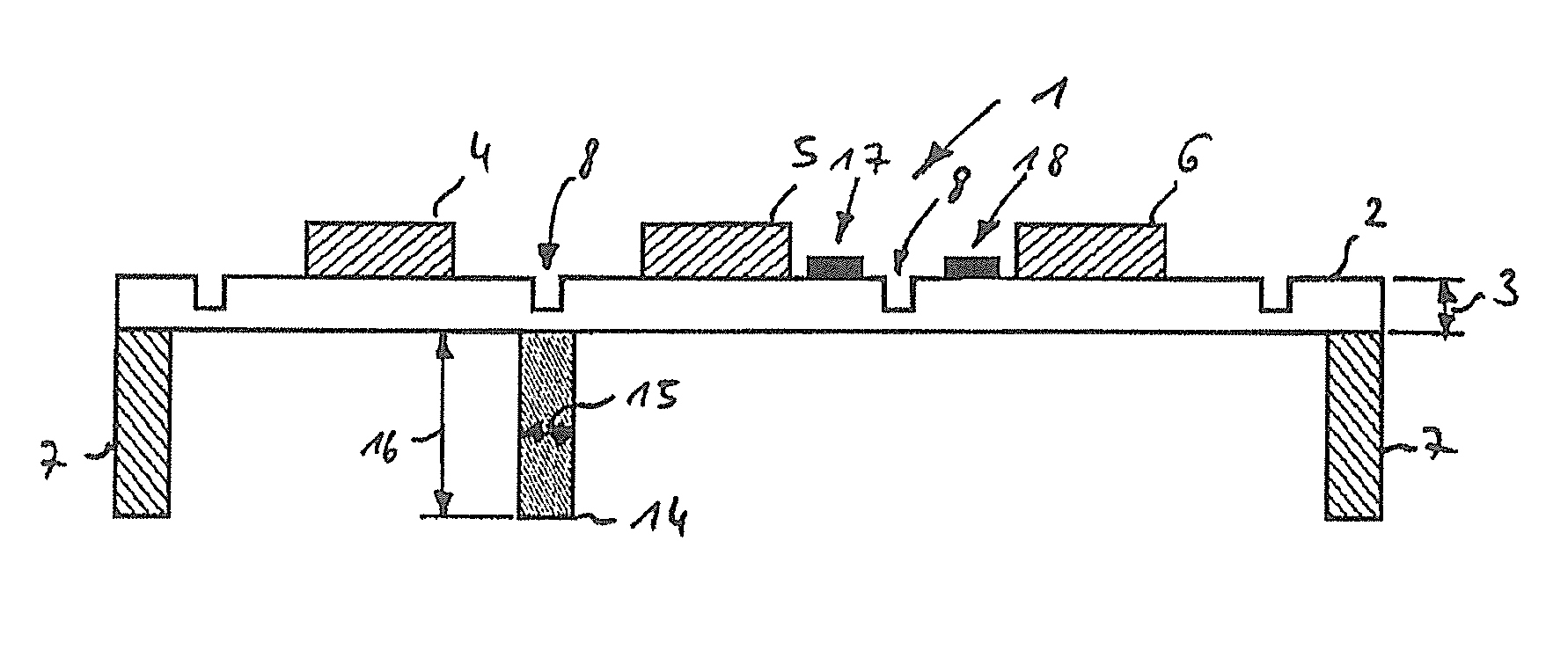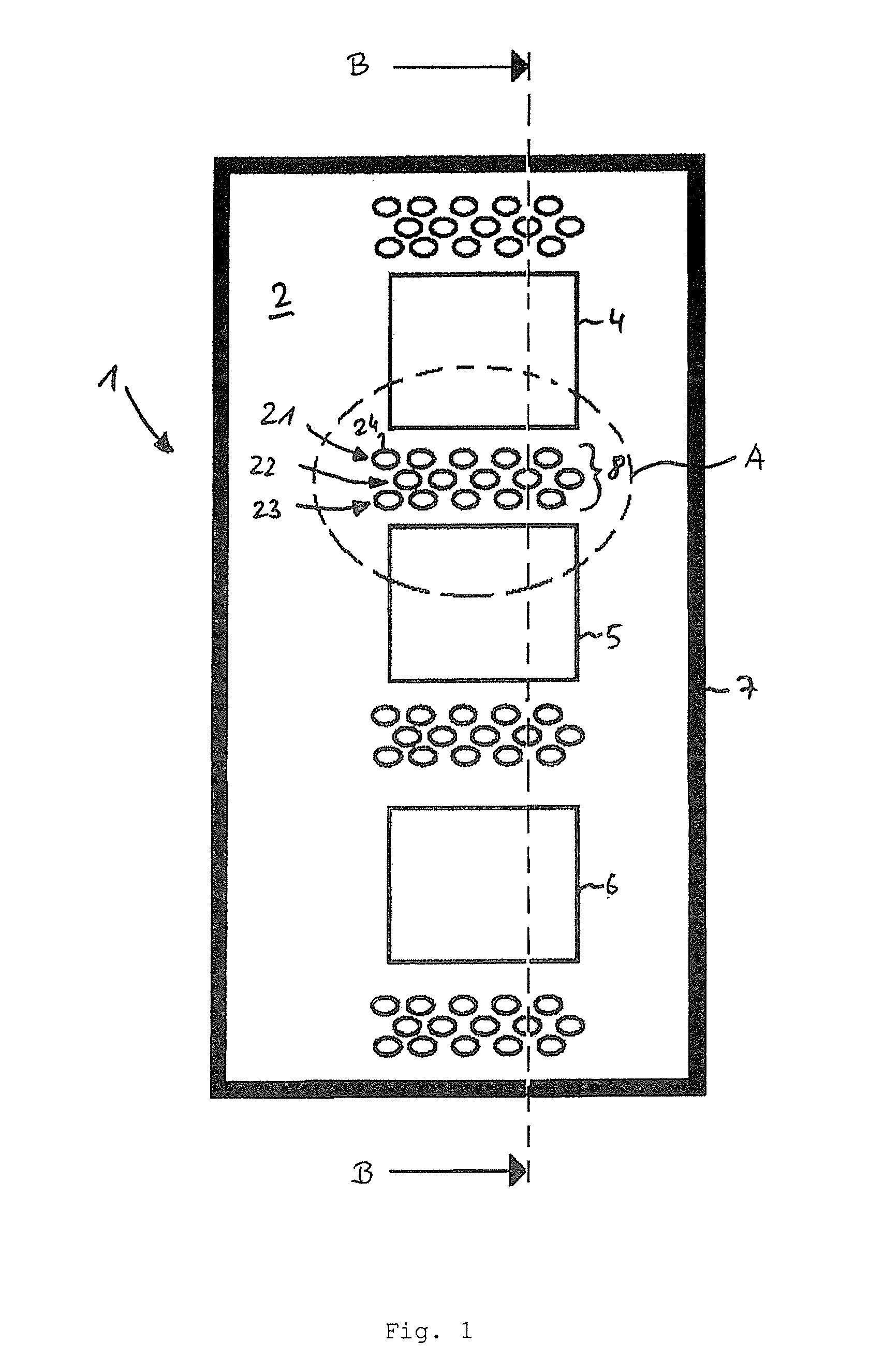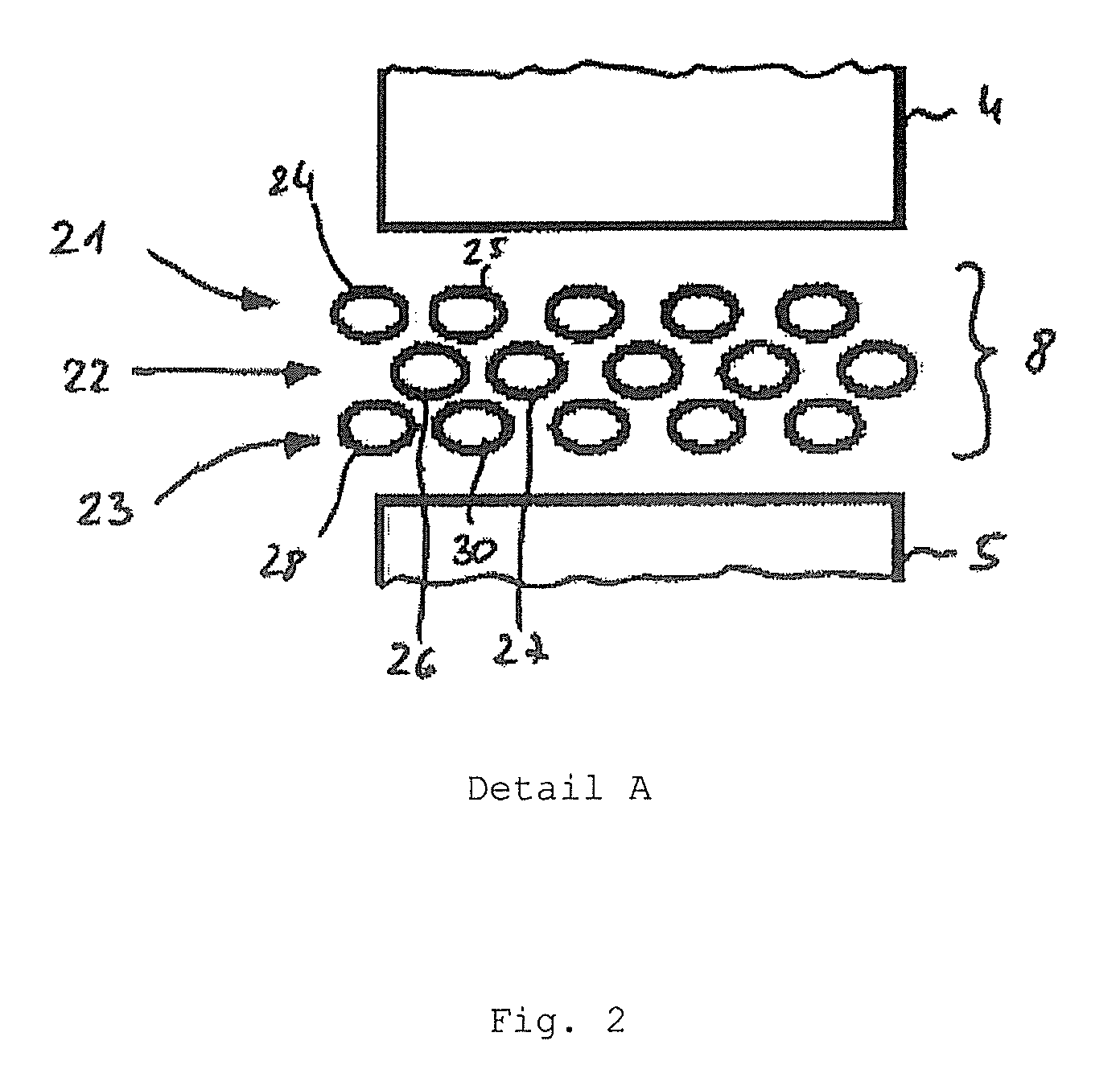Infrared light detector having high resolution
a high-resolution, infrared light technology, applied in the field can solve the problem of too large area of infrared light detectors, and achieve the effects of stable structure, low response time of sensor chips, and high thermal conductivity
- Summary
- Abstract
- Description
- Claims
- Application Information
AI Technical Summary
Benefits of technology
Problems solved by technology
Method used
Image
Examples
Embodiment Construction
[0023]As is clear from FIGS. 1 through 5, an infrared light detector 1 has a carrier membrane 2 that is designed with a membrane thickness 3. The carrier membrane 2 forms a substrate for a first sensor chip 4, a second sensor chip 5 and a third sensor chip 6. In FIG. 1, 3 through 5, the sensor chips 4 through 6 are attached equidistantly next to one another. Provided on the outer edge of said carrier membrane 2, on its underside, is a supporting frame 7 that surrounds the carrier membrane 2 and supports this.
[0024]The sensor chips 4 through 6 comprise pyroelectric material, such that upon their exposure with infrared light—in particular in a wavelength range between 3 through 20 μm—a corresponding electrical signal is present at the sensor chips 4 through 6.
[0025]Upon exposure of the sensor chips 4 through 6 with the infrared light, this is absorbed by the sensor chips 4 through 6 such that the sensor chips 4 through 6 heat up. Given a different heating of the sensor chips 4 through...
PUM
 Login to View More
Login to View More Abstract
Description
Claims
Application Information
 Login to View More
Login to View More - R&D
- Intellectual Property
- Life Sciences
- Materials
- Tech Scout
- Unparalleled Data Quality
- Higher Quality Content
- 60% Fewer Hallucinations
Browse by: Latest US Patents, China's latest patents, Technical Efficacy Thesaurus, Application Domain, Technology Topic, Popular Technical Reports.
© 2025 PatSnap. All rights reserved.Legal|Privacy policy|Modern Slavery Act Transparency Statement|Sitemap|About US| Contact US: help@patsnap.com



